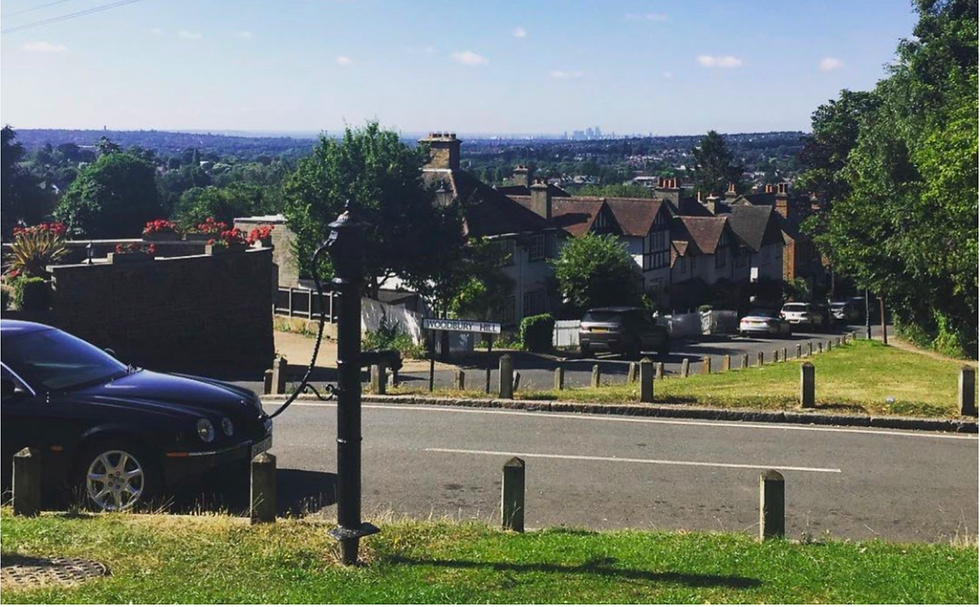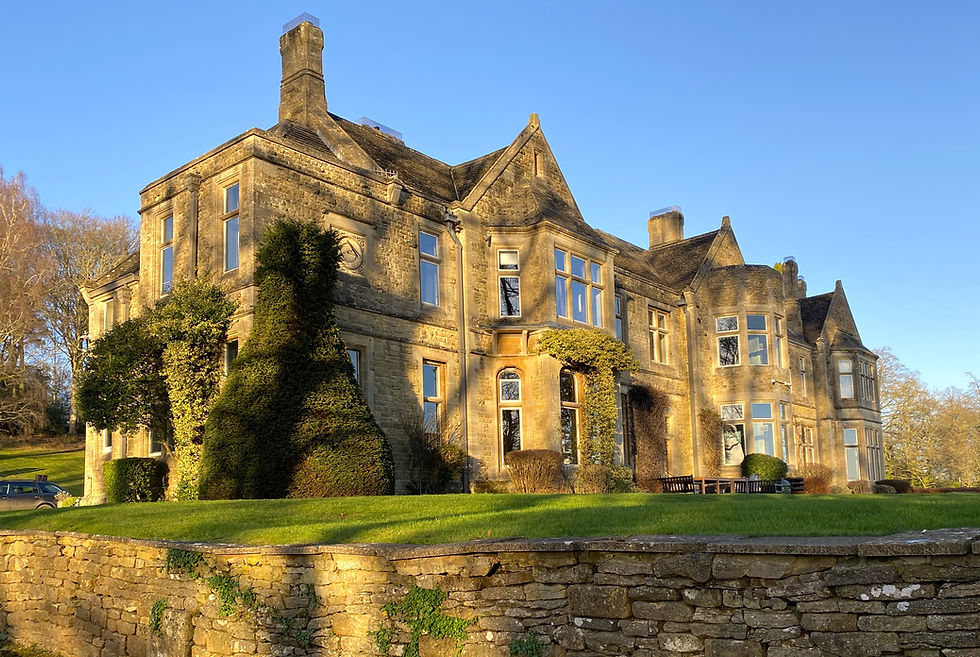A Tall Order: musings on height and other things...
- Lucy Jarvis
- Nov 6, 2020
- 7 min read
Updated: Jul 31
By Lucy Jarvis BA(Hons), PGCert, MSc., IHBC, FRSA
What is a tall building? Well, there's a question! Historic England's guidance on tall buildings (Tall Buildings: Advice Note 4, 2007) makes reference, on page 2, to a 'ten-storey' building. That is, rather strangely, the only reference to a height within the whole of that document. In my experience, anything over five-storeys can be considered tall but it often has more to do with the surrounding context and the prevailing building heights.
Tall buildings can be contentious. I have found myself in many situations where the very prospect of a tall building being introduced onto a site has immediately raised alarm bells with officers, particularly conservation officers, and triggered an often knee-jerk response that identifies harm, without any justification for that finding and often simply because there are designated and non-designated heritage assets within the immediate surroundings. It is taken as a given and, maybe I am naïve here, but I do not think that is the right approach to take when it is our job, as heritage professionals, to provide informed and balanced judgements on significance that help to manage change, not prevent it.
Tall buildings have changed the face of urban planning across the globe so very significantly, for both the better (yes, I strongly believe this) and in some cases the worse. They come in all shapes and sizes. Their design is complex and multifaceted. It is not just about what you can see in conjunction with or in relation to another building or simply about changes to skyline, it is about the experience, particularly at street level, where these buildings are encountered on a daily basis by pedestrians. Very rarely can the entirety of a tall building be appreciated in one go. The observer sees the tall building in different ways depending on where they are viewing it from and what they are seeing it in in conjunction with. The experience of the observer on the ground will differ greatly to the experience of someone seeing the building from a distance or indeed a height. Think Greenwich Park (which is a grade I listed park and garden). Think how the buildings that make up Canary Wharf are clustered together in a certain formation and seen in a certain way from that park. Think about how they contribute to the view out from the park and the sense of place afforded through the presence of those tall buildings in that view. Then think about how that experience might change from within Canary Wharf itself, at street level - an entirely different experience sparking a whole different set of considerations.

View from Brooklyn towards Manhattan (photo author's own)
Think of Manhattan. Tall buildings already existed in the late 19th century (tall, by Manhattan standards, already meaning buildings in excess of 10-storeys) but, as an area that had pretty much reached its maximum development potential by the early 1900s, without encroaching on pedestrian sidewalks, the concept of the tower or 'skyscraper' emerged. These amazing feats of engineering offered something new and aspirational. Architectural theorists were in seventh heaven over the possibilities offered by the seemingly endless potential of these new mega structures. Imaginative designs were drawn up, some of them utterly ludicrous, which explored the potential for a different function on each floor offering everything people had on the ground but under one roof - a metropolis in their own right.
The infamous 1916 Zoning Laws in Manhattan had a notable influence over how the area went on to be developed, setting virtual but practical parameters within which all development had to fit. So, even in the early 20th century, the complexities and pitfalls brought about by these new lofty buildings had started to reveal itself, not least of all the impact they had at street level and the inevitable reduction in daylight caused by one tall building constructed close to another.

View towards London as seen from the edge of Epping Forest (photo author's own)
Back to the UK, tall buildings have had a much slower start and are received, in my experience, with far less optimism. Growing up on the edge of London in the 1980s, London did not really have a skyline until the early 1990s, with the completion of Canary Wharf, which I always had a wonderful view of from the top of my road as a child. I literally watched the London skyline emerge. Then, not a lot; until, 2001-4 when Norman Foster's bullet-shaped contribution came to fruition in the form of 30 St Mary's Axe (otherwise fondly known as 'The Gherkin'...I won't mention the time when one of the pioneering, energy efficient, windows fell out of the 28th storey crashing to the ground in 2005).

View from 1 Canada Square (photo author's own)
Since then, the shape of London has changed. It has been forced to change in order to progress and evolve and in doing so, just like all the towns and cities across the UK, a whole new problem (I use the term 'problem' deliberately here) has emerged for us heritage specialists.
These musings of mine are really focused around two things. Firstly, the value of tall buildings (and, I guess new buildings generally) in the here and now; and secondly, the impact those buildings really have on the significance/appreciation of the surrounding historic built environment. I don't know the answers.
I always remember that day I turned up to a meeting on site at the Edwin Tate Library in Battersea, in around 2009. I went to meet the client to discuss the conversion of the library into what is now The Library Space, an arts and events venue. The client greeted me with a comment along the lines of, 'oh, I thought you were going to be an old man in tweed'. This kind of sums up how I think many people who do not work in the heritage sector imagine those that do to be like. But, more significantly, I think it sums up an approach to conservation that is still, unfortunately and rather ironically, stuck in the past.
I think this is problematic because actually what we are dealing with is the future. Conservation is about managing change, not preventing. Tall buildings are some of the most prominent and visible structures that we have to deal with as consultants and their sheer size can often invite an uncertain and, dare I say, antiquated response that is not progressive or evolving with the times. Conservation should be progress and our response to the historic built environment needs to reflect that. Is it not our job, after all, as consultants, historians and critics, to help shape and influence future development? Surely, we are the optimists. It is our job to have an open mind and to take an informed professional and well-balanced view. We need to challenge the past and our own interpretation of what is valuable about it or, more specifically, what is significant about it.
This is relevant because dealing with tall buildings is challenging. It asks for a very specific approach with quite a specific set of considerations, which aren't necessarily relevant when dealing with other 'shorter' buildings. This building typology needs to be approached from a heritage perspective with an open mind because some tall buildings are likely to be considered historic and of value in the future. Indeed, this could start to happen sooner than we think, particularly if the consequences of Covid-19 mean a slowdown in building tall offices, and converting existing offices to other mixed uses, including residential, becomes necessary? Could the London skyline stall, so that people want to keep it there (in '2020') for its own sake, in the same way that they want to preserve views of St Paul’s Cathedral and the Tower of London?
This does not just apply to tall buildings although they are, in my experience, the most complex to deal with. This applies to how we approach and assess the impact of all new development on the historic built environment, particularly new development on a large-scale. Assessing the significance of heritage assets needs to be proportionate and sensible and we should remain objective (which is very difficult, but not impossible) but I am not going to go into 'The Trouble with Significance'. That is something that has been very eloquently covered by my colleague Jonathan Edis, in a post from November 2019 (worth a read if you haven’t).
I am suggesting those of us working in the heritage profession need to have a more optimistic approach towards tall buildings and the potentially positive impacts they can have on our historic built environment. I am also suggesting that there should potentially be a slightly different set of criteria for assessing the significance of 21st century architecture in the here and now, looking to the future.
Historic England's guidance on designation notes that the purpose of listing is to recognise the 'special interest' and 'value' of any given building type to this and future generations, whilst also giving it protection through legislation and policy. Two examples of where this has been applied to modern tall buildings include,
London's Senate House by Charles Holden, which was one of London's first skyscrapers, constructed in 1932. Back in the day, this 19-storey building was the second tallest building in London, reaching 210 ft. It was listed grade II* in 1968, some 36 years after its completion.
The Lloyd's Building or, more accurately, the 'inside-out building', is a 14- storey building, completed in 1986 and designated grade I in 2011 (only 25 years after completion). It is considered to be one of the most extreme examples of Bowellism (no need to go into what that is now but, apart from being hard to pronounce, it is largely associated with the likes of Richard Rogers and typically manifests itself through the innards of a building being visible externally - think Pompidou Centre in Paris).
These are examples of where the value of these tall buildings has been identified quite soon after their completion. These buildings were still relatively 'new' when they were designated. It demonstrates that sometimes tall buildings themselves can be considered of significance and sometimes we have the ability to recognise the significance of something before it is old. It does happen sometimes; I think it should happen more.
.png)



Comments